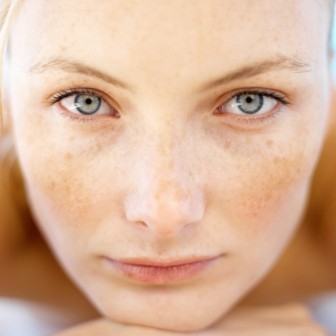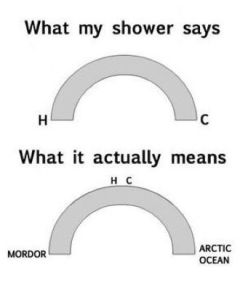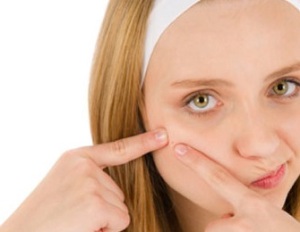The first question I always ask new guest is, “What do you do on a daily basis to take care of your skin?” The responses I get vary from routines with long lists of complicated lotions and potions that take up to half an hour twice a day to, “I wash my hair with shampoo and I figure it hits my face when I rinse it out.” So what should you be doing? Is less more? Or do you only get out what you put in?
“Give me 2 minutes a day and I’ll give you a lifetime of beautiful skin,” is my motto for skin care. That’s it, just 2 minutes. One in the morning and one at night. Less time consuming than brushing your teeth, and certainly easier than flossing (My dentist brother is probably rolling his eyes), but it’s true!
So here is a break down of what a good at home skin care routine looks like for everyone. Products will vary, but the steps are the same no matter your skin type!
Your skin care routine should come down to these steps:
1. Cleanse
2. Tone
3. Serum (just once a day)
4. Eye Cream/Moisturizer
Completing these steps should take about 1 minute on average each morning and night.
Step 1: Cleanse/Exfoliate: The first part of a good skin care routine starts with cleansing. It is far more important that you cleanse at night than it is in the morning. You are an object on Planet Earth, and you collect daily dirt and grime just like cars, buildings, and park benches. I’d also be willing to bet you’re a normal person who doesn’t wash your pillowcase every day. So when you forget to wash your face before bed you deposit all the daily environmental damagers you collected that day to your pillowcase. You continue to expose yourself to them not just that night, but each subsequent night until you change your pillowcase, as well. Every day this happens, you’re effectively doubling your environmental damage—and that leads to rapid aging! So, always always cleanse at night, even if it was just a lazy day at home. In the morning you can get away with splashing water on your skin, especially if you are not very oily.
Exfoliating goes along with cleansing. You should be doing this about once or twice a week. Types of exfoliation include: facial scrubs; exfoliating masks; sonic exfoliating brushes; or can even be as simple as using a wash cloth during cleansing (However, I do not suggest using a wash cloth on your face, ever…but that’s for another time!) Do not use an exfoliating cleanser daily, or do any combination of exfoliation more than two times per week. This will lead to problems that feel like combination skin.
Special tips: Avoid hot water, pat your skin dry with a clean dry cloth, and make sure your skin never feels tight, dry, or squeaky clean after. If your skin does have those feelings after cleansing, you should look into changing your cleanser. Click here for a guide to help you.
Step 2: Toning: Everyone should be using a hydrating toner. It helps cut back on blackheads, combination skin issues, and helps your other products work better! The more hydrated your cells, the healthier your skin. To ensure that you’re using a hydrating toner and not an astringent there are two good things to look for. First, if the product comes in a spray bottle, it’s a hydrating toner. Second, check the ingredients list. If you see alcohol or salicylic acid, it’s an astringent.
Step 3: Treat: Serums are often confused with moisturizers, but they provide a different service to your skin. They are highly concentrated active ingredients that penetrate deeply into the skin to provide some sort of treatment. I think of serums as being very similar to medicines. They can do all sorts of things, you just have to pick the right one for your needs. After all, you wouldn’t put Neosporin on your forehead for a headache, or tape Advil to a cut. With serums, the categories for treatments are indicative of the ultimate skin care goal. They do things like reduce breakouts and the appearance of fine lines, wrinkles, or uneven skin tone. Common active ingredients are salicylic acid, hydrogen peroxide, and Kombucha for breakouts, retinol for fine lines and wrinkles, and Vitamin C or hydroquinone for uneven skin tone.
Special Tip: If you are being treated with topical medications like Retin A or Tazorac by a doctor, this is your treatment step. Don’t use additional treatment serums. If you find that these medications irritate your skin, you can try applying them on top of your moisturizer, instead.
Step 4: Moisturize and Protect: Finish up your one-minute of dedicated skin time each morning and night with eye cream and moisturizer. You want to apply eye cream before your facial moisturizer. The molecules of your facial moisturizer may be to big to be absorbed around your eye, so by applying your eye cream first you ensure getting maximum benefit of your eye product. If you don’t use an eye cream, your facial moisturizer isn’t hurting your eye area, but it is most likely just sitting there doing nothing, so pick up an eye cream!
You should have a moisturizer with SPF between 15-30 for everyday use. Make sure the SPF is broad spectrum and protects against both UVA and UVB sun-rays. Most of us aren’t going to get a sunburn in our daily routines, but using SPF every day is a big step for anti aging.
UVA and UVB have different effects on our skin. An easy way to remember these differences is to remember that A is for aging and B is for burning. UVB rays cause sun tans and burns, and that almost immediate result of exposure brings it to our attention. UVA rays, on the other hand, are more subtle; you won’t see an immediate impact, but they are actually the stronger of the two rays. They penetrate all the way down to the dermis, breakdown collagen and elastin, and cause sunspots and age spots. They are active all year long and unlike UVBs, have no trouble penetrating glass. So if you’re seeing natural light, you’re getting UVA exposure.
Once the sun goes down and the threat of UV rays is gone I prefer for the nighttime moisturizer to be SPF free. It’s also a good idea to look for ingredients like vitamin E, vitamin A, and vitamin A derivatives like retinol in your night cream. You go into a natural resting and restorative phase when you sleep so it’s a good idea to have ingredients that support that process.
Bonus Step: Get facials! If you get a facial once a month and have a professional guide you to the right products, this is a great way to keep your skin looking healthy for longer. The massage techniques in a facial are designed to help tone and tighten the muscles of the face, so it’s sort of like hitting the gym for your skin, and you can get great results even going once a month!
If you’re just getting started with having an at-home skin care regimen, challenge yourself to commit to it for 21 days. That’s how long it takes to form a habit, and before you know it, it will be as natural as brushing your teeth!





